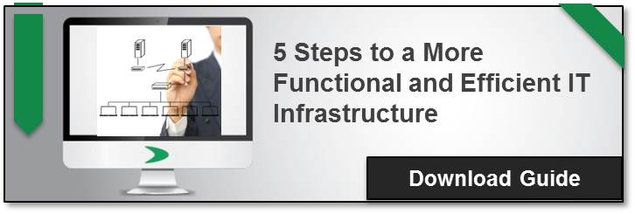Present Blog – IT Thought Leadership
Blog Present-IT thought leadership
Blog Present-IT thought leadership
IT thought leadership blog for CIOs and CTOs in Canada seeking resources to drive IT as a business contributor: hybrid cloud, infrastructure, managed services and security and IT recruitment.
 The world of technology is evolving faster and faster, but the habits of users are not following this frantic pace and it is in this context that we see one of the biggest cultural clashes in businesses.
The world of technology is evolving faster and faster, but the habits of users are not following this frantic pace and it is in this context that we see one of the biggest cultural clashes in businesses.
In general, the upgrade of servers and applications will often be delayed due to lack of budget and / or time to do upgrades and it’s only when organizations find themselves up against the wall, that panic sets in and change management becomes faulty. In these situations, all levels of the organization suffer the consequences, including end users.
If we consider the example of email servers which is the core for all organizations, the replacement of this infrastructure can be a real headache. Here are our three recommendations to help you in a smooth mail server migration.
1. Be humble in regards to your internal capabilities
It is normal to want to do as many things as possible in-house, but it is also important to consider whether internal resources have the necessary expertise to identify and implement the best solution for the company, or if it is necessary to use an external partner for either of these phases.
Ask yourself this question: If you had to do business with a partner for a migration project, would you ask them for references of similar projects on which they worked on before hiring them? If the answer is yes, you should also ask this question internally to make sure you have the necessary qualified resources.
Improvement projects for critical IT infrastructures are also projects that consume considerable time and utilize key resources. Without planning several months in advance, the challenge will be significant.
A typical situation encountered in many companies is when they are faced with the need to update their email servers and applications (Domino or MS Exchange) and office suites (eg Office 365) to the latest version or when they are considering more agile workflows such as Cloud (and thus benefit from a better efficiency). This often results in a gap between the technology in place and the one to which they must migrate; which also leads to an equipment and skills gap.
2. Conduct a rigorous and realistic assessment of the project
For IT infrastructure projects, hope is not a plan. The analysis should be considered an integral part of the process with a number of hours dedicated to this step. You can expect 20 hours for a basic architecture and somewhere around 50 for complex infrastructures.
Your evaluation for preparing the migration of mail servers should include the following elements by associating their costs, recurring fees, resources that will be affected and completion dates
• Analysis of the current configuration of servers
• Recommendations for new servers: CPU, memory, disk, network interface
• Development of a migration plan including temporary servers if necessary
3. Prepare the users for change
End-users will often request updates to their software and yet they will be reluctant when the change is actualized. You've probably heard " It was better before! " after implementing new solutions.
Companies will often neglect this part of the project and this is what contributes to a slow adoption of new tools.
There are multiples options for preparing users today:
• Demonstration Videos
• Interactive Tutorials
• Training
However, it is important to note that this preparation should not be on a voluntary basis, it needs be mandatory, so users can be operational as soon as possible on the new version. Once the new user is operational, the education continues.
When a migration project is completed with the help of an external partner, the transfer of knowledge must also be done at the infrastructure manager level, so that they have the necessary autonomy to maintain the services.
Important
Keep in mind that the only constant in technology is change. Add to that human nature, inherently resistant to change, and you get the perfect cocktail to make life complicated when you need to modernize your IT architecture drastically. This is why you can really increase your chances for success with a plan and an experienced partner.
Learn about the essential steps to improve your IT infrastructure by reading our guide.
© keribevan - Fotolia.com
About Blog
The right use of technology addresses business challenges and drives business growth in all areas of an enterprise. We hope this blog will offer insight into developing strategies and tactics to enable you to identify those key drivers of growth and keep pace with and anticipate the rapid technology change of today.
Posts by Topic
- IT infrastructure (116)
- IT security (92)
- IT Innovation (59)
- Trends (51)
- Cloud (47)
- Managed services (46)
- Mobility (38)
- Digital transformation (29)
- CIO/IT leaders (28)
- Events (28)
- News (23)
- Microsoft 365 (17)
- Security (17)
- IBM (16)
- Disaster recovery (DR) (14)
- High availability (12)
- Recruitment (12)
- Storage (12)
- Big Data (11)
- Collaboration (11)
- AI (9)
- Case study (9)
- Office 365 (9)
- BYOD (8)
- Customer Experience (8)
- Hybrid Cloud (7)
- Current events (6)
- SAP Hana (5)
- Business intelligence (BI) (4)
- Converged infrastructure (4)
- Convergence / Hyper-convergence (4)
- Virtualization (4)
- Copilot (3)
- Future of retail (2)
- Retail (2)
- trend (2)
- Backups (1)
- Beacon (1)
- Blog Migrations (1)
- Contests (1)
- Infrastructure TI (1)
- Innovation TI (1)
- IoT (1)
- MDM (1)
- Stockage (1)
- Virtualisation (1)
- blockchain (1)
- cio (1)
- replication (1)
- Étude de cas (1)

